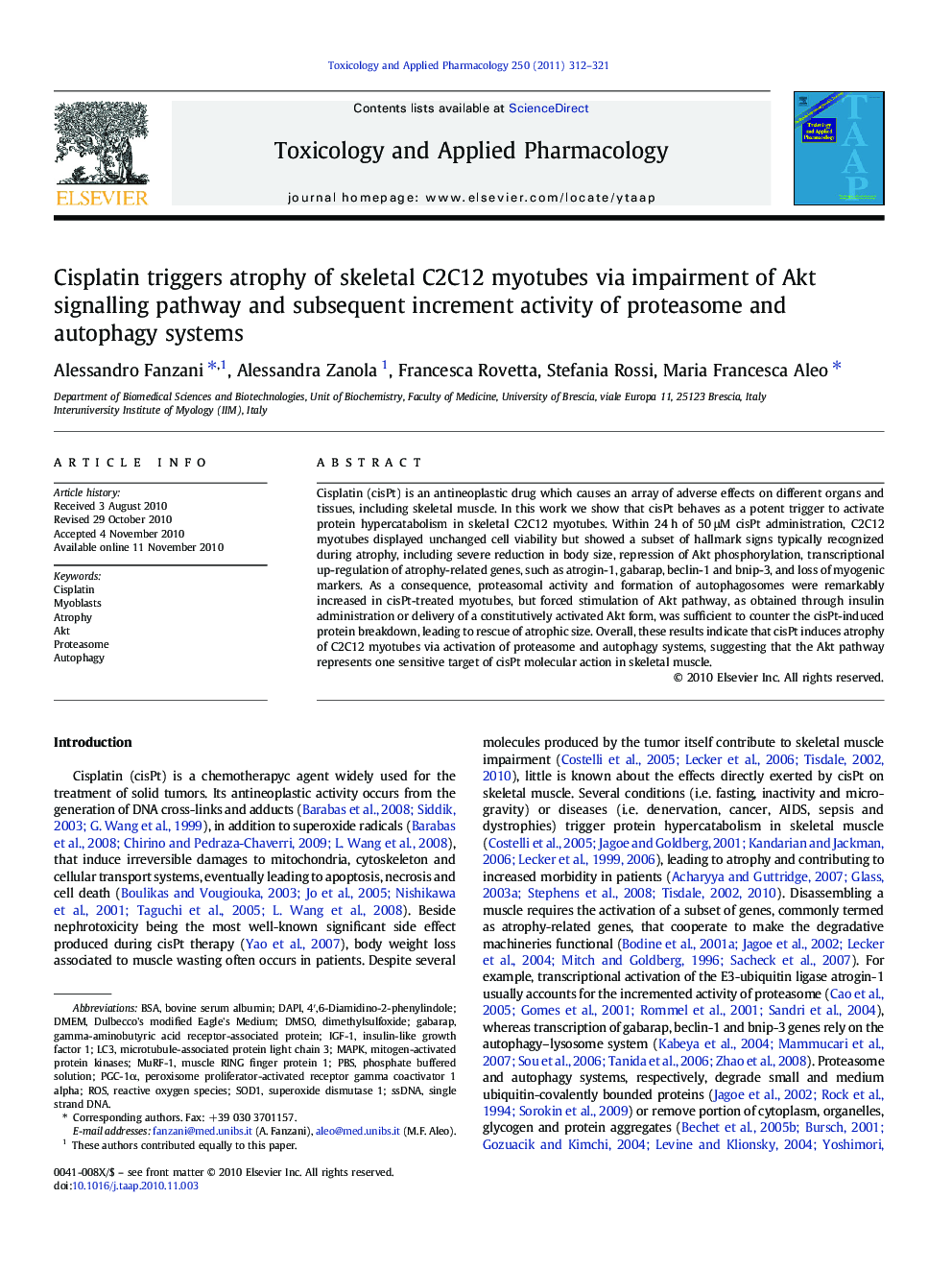| Article ID | Journal | Published Year | Pages | File Type |
|---|---|---|---|---|
| 5846888 | Toxicology and Applied Pharmacology | 2011 | 10 Pages |
Cisplatin (cisPt) is an antineoplastic drug which causes an array of adverse effects on different organs and tissues, including skeletal muscle. In this work we show that cisPt behaves as a potent trigger to activate protein hypercatabolism in skeletal C2C12 myotubes. Within 24 h of 50 μM cisPt administration, C2C12 myotubes displayed unchanged cell viability but showed a subset of hallmark signs typically recognized during atrophy, including severe reduction in body size, repression of Akt phosphorylation, transcriptional up-regulation of atrophy-related genes, such as atrogin-1, gabarap, beclin-1 and bnip-3, and loss of myogenic markers. As a consequence, proteasomal activity and formation of autophagosomes were remarkably increased in cisPt-treated myotubes, but forced stimulation of Akt pathway, as obtained through insulin administration or delivery of a constitutively activated Akt form, was sufficient to counter the cisPt-induced protein breakdown, leading to rescue of atrophic size. Overall, these results indicate that cisPt induces atrophy of C2C12 myotubes via activation of proteasome and autophagy systems, suggesting that the Akt pathway represents one sensitive target of cisPt molecular action in skeletal muscle.
